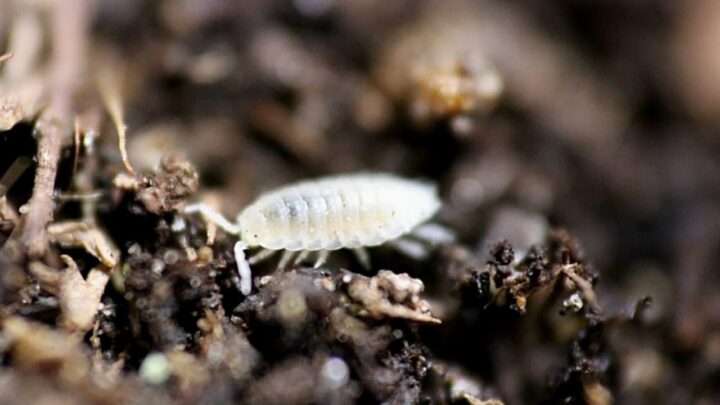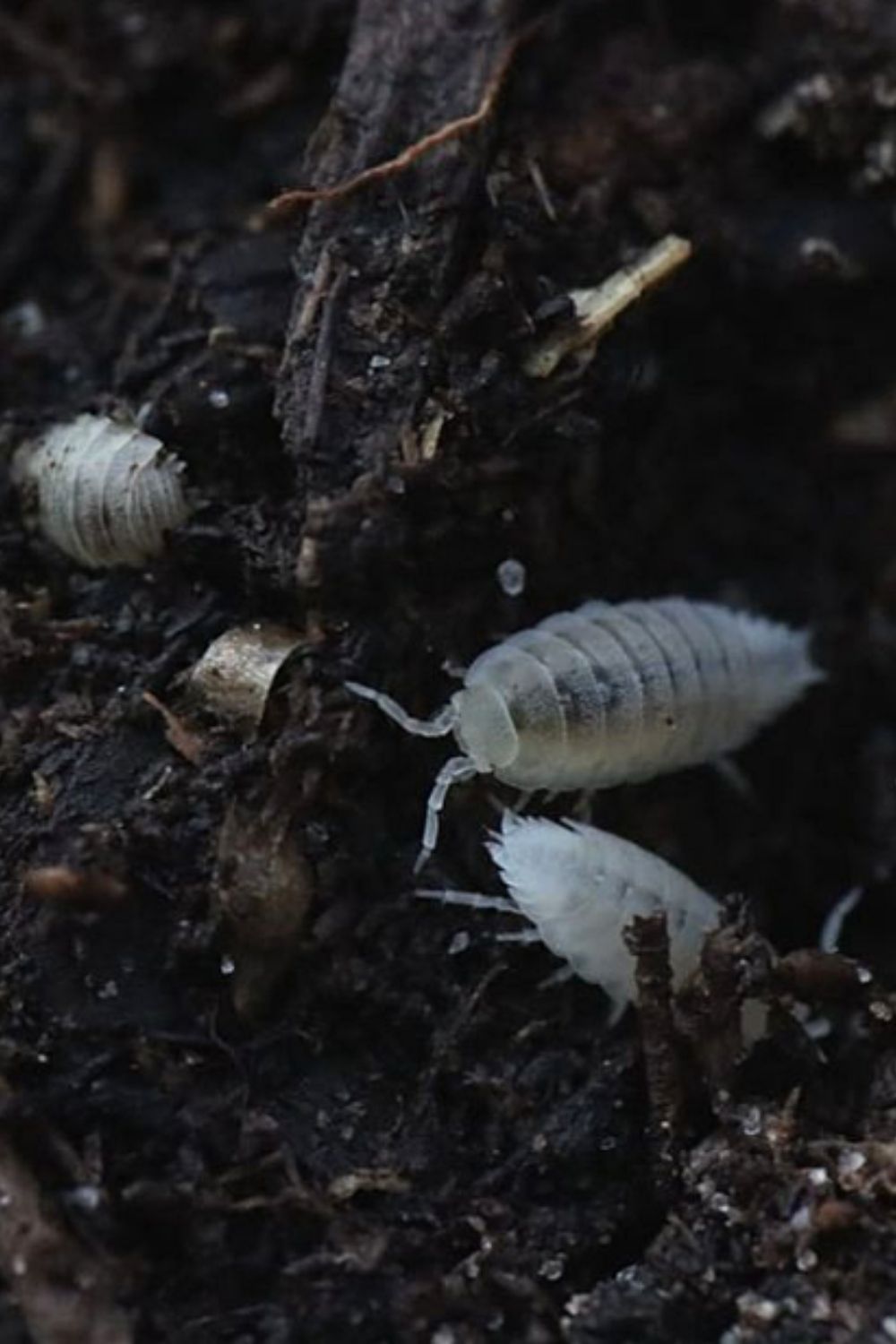Dwarf White are smaller, more docile types of isopods that like to spend most of their time burrowed underground.
They are given the scientific name Trichorhina Tomentosa and don’t have any distinguishing patterns or colors on their backs. They’re known to originate from South America.
An interesting fact about Dwarf Whites that makes them popular among breeders is that they are parthenogenetic. Females can reproduce without any male influence.
This type of reproduction is considered a fluke in the animal world with most types of isopods unable to do this. This is why the Dwarf White is considered to be the most cultured type of isopod around.
They are also very active, making up for their small stature with their cleaning prowess. They are perfect additions to any bioactive environment where you keep both animals and plants.
Below, I will be explaining further how to care for and breed Dwarf White isopods. With these low-maintenance isopods in your terrariums, you can expect a lively and clean environment.
Dwarf White Isopods Care Guide
Dwarf White isopods are soft-bodied, low maintenance, and shy creatures that have high reproductive rates. You can keep them in the same enclosures as invertebrates, reptiles, and amphibians. They prefer warm and humid environments at around 75° Fahrenheit (23° Celcius) with 80% humidity to thrive.
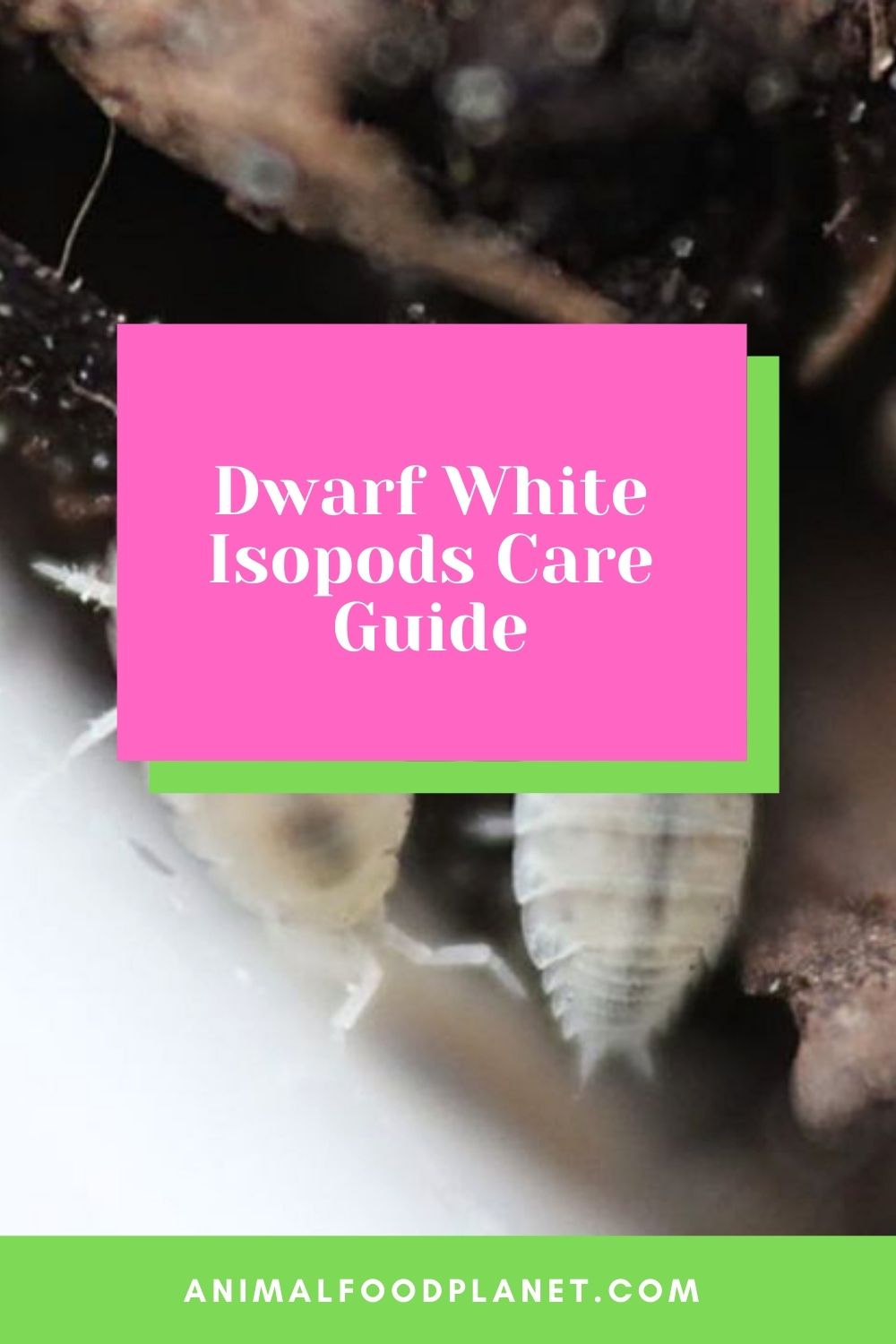
Dwarf White Isopods Care Guide
Dwarf White Isopods Care Guide
Size
Dwarf Whites are extremely small isopods. Typically, a terrestrial isopod can grow up to 2 cm (0.78 in) in length when they reach adulthood (though there are exceptions).
These isopods, in contrast, only reach 0.5 cm (0.19 in) in length. The Dairy Cow isopod, which looks similar to the Dwarf White, is much bigger reaching up to 2 cm.
Their smaller sizes are preferred by many breeders. They aren’t easily seen inside ecosystems so they won’t be eaten by other reptiles or animals.
Conversely, they are good food sources for smaller animals if used as feeders.
Since they’re small, dwarf white isopods behave differently from other isopods. You won’t see them scurrying around inside the ecosystem as they prefer to stay hidden.
So, I wouldn’t purchase these to simply be kept as pets.
They will also play dead if they feel threatened or are seen in the open. They don’t have a hard exterior shell and will not curl up into a ball as other isopods do.
Lifespan
Isopods in general have a lifespan of 3 to 4 years. But, in my experience, many of the larger species tend to die within the first two years.
Though, with ideal living conditions, they can live for much longer.
The Dwarf White has an average lifespan of 2 to 3 years. Keep in mind, however, that some of these isopods may end up dying even under the perfect conditions.
That’s just how nature works.
Difficulty
Dwarf Whites are considered easy for beginners to care for. They are very adaptable, requiring minimum specifications for their environment.
They are more partial to tropical ecosystems where it is hot and humid, but they can survive even outside these conditions.
If you’re purchasing these isopods, you should keep in mind that they will behave differently than most other isopods.
Enclosure
These isopods are mostly kept in bioactive setups. Since they hide underground most of the time, they don’t make for interesting pets.
However, if you’re culturing them, you may need to keep them separated from other animals until they start breeding.
Containers made of either plastic or glass are great for this purpose. Glass is preferred as isopods aren’t great climbers and will not be able to climb out of it.
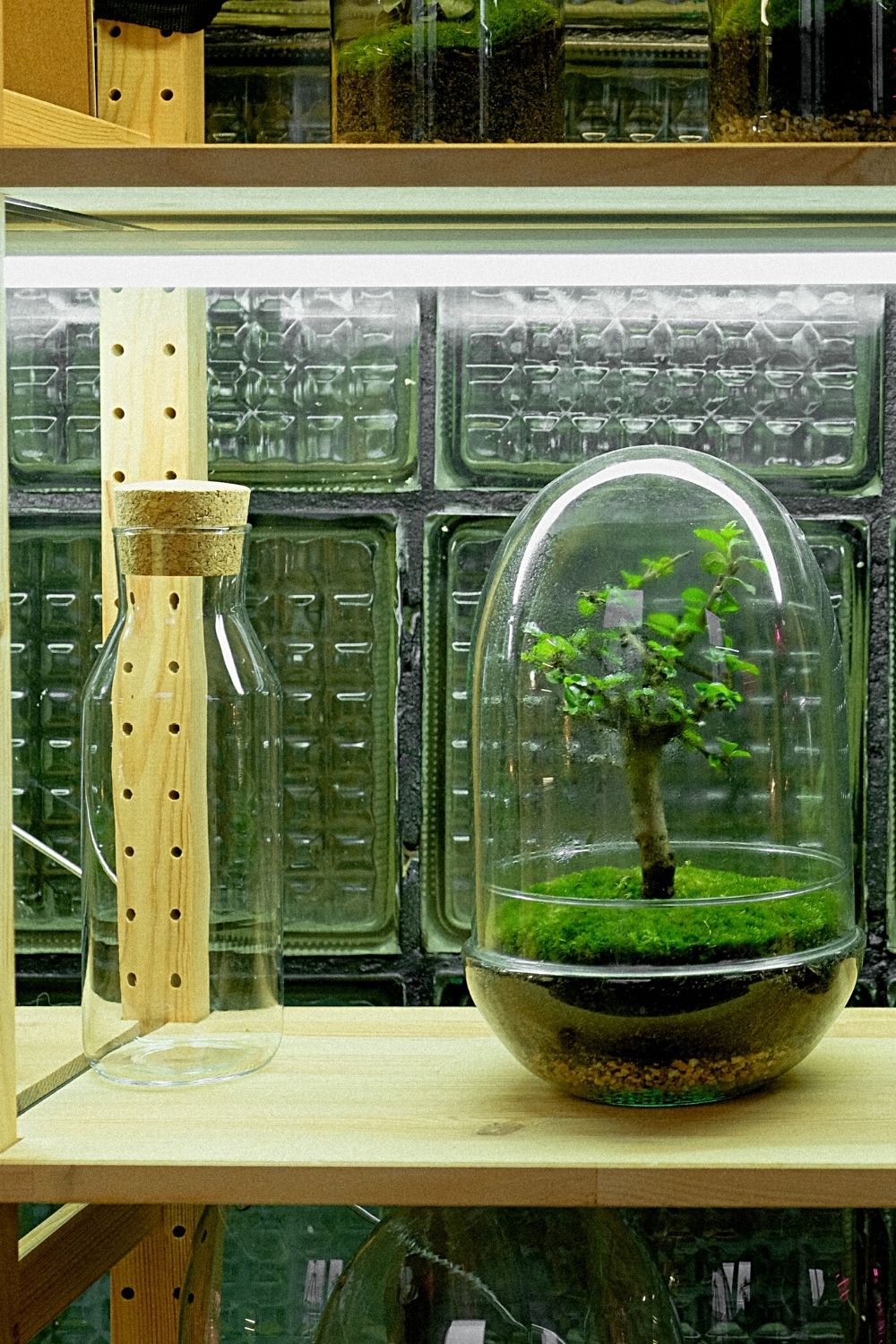
Glass containers are the best to grow your Dwarf White Isopods in as they’re not great climbers
For most isopods, a 5 Liter container should be enough as a starting point for around 20 isopods. Since Dwarf Whites are smaller, you can easily fit around 30 in the same container.
They also require plenty of ventilation so make sure you create enough air holes on the top of the enclosure.
You can put a fine mesh over the top to prevent your Dwarf Whites from climbing out as well as prevent other animals from entering their abode.
Substrate
The substrate is one of the more important elements you need to maintain for isopods. For Dwarf Whites, you will need to make it tropical, moist, and deep.
The floor of your substrate should include items that can retain moisture and keep it cool. You can use moss, coconut fiber, and compost.
Compost is a good addition as these isopods will often burrow into it.
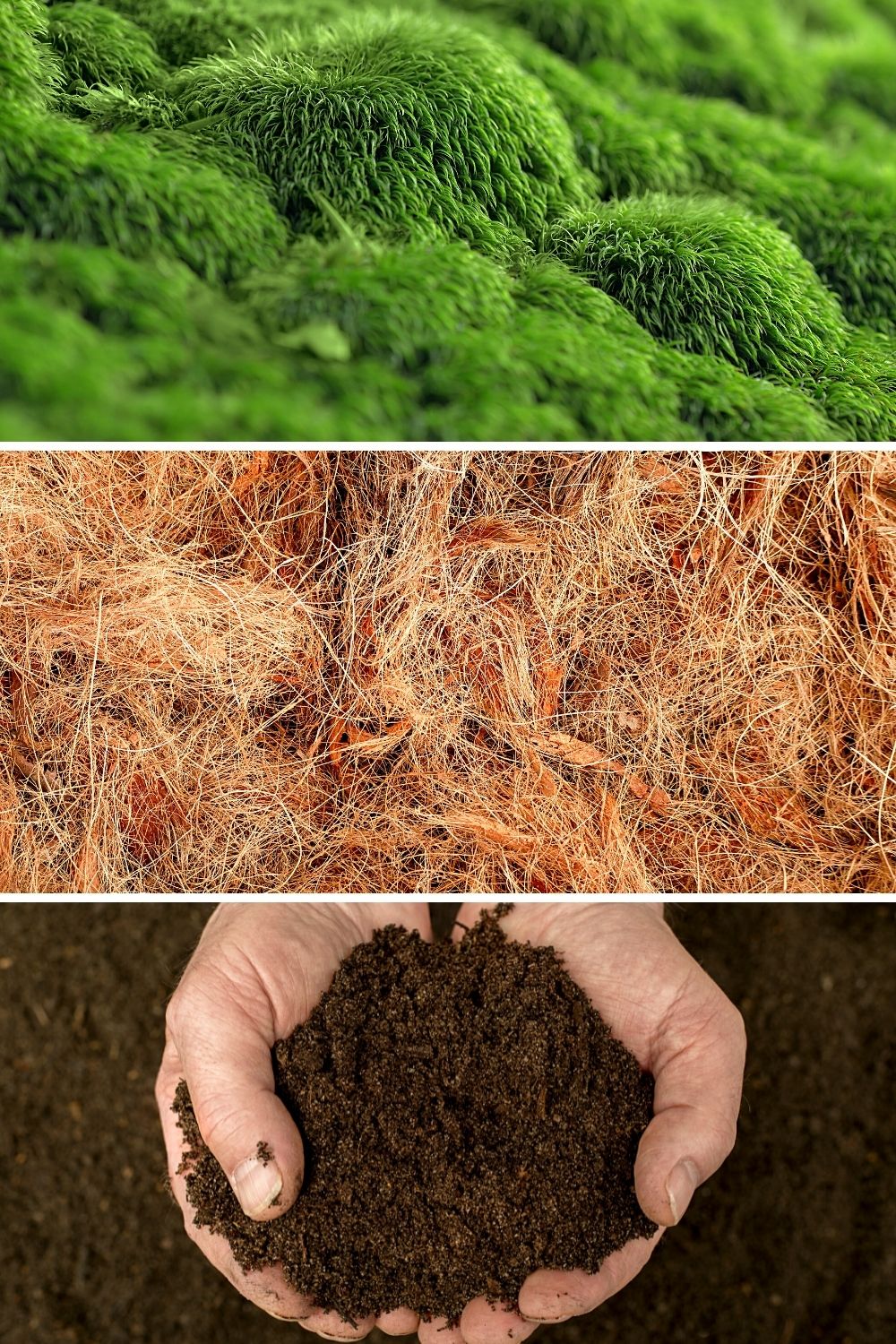
Moss, coconut fiber, and compost are good items to add to keep your Dwarf White Isopods’ substrate cool and moist
This section of the substrate should then be covered by more dry products such as leaf litter and decaying organic matter. You can also use rotten wood and pieces of bark.
The top layer acts as a shelter for isopods as well as a form of nutrition. You can even use an ABG mix if you cannot find these products and mix them yourself.
Temperature
If you want your Dwarf White isopods to thrive, the temperature should mostly be warm inside the ecosystem. You can regulate the temperature to be between 75° to 85° Fahrenheit (23° to 29° Celcius).
However, they can survive even if the temperature is much cooler or warmer, which isn’t often the case for isopods.
To provide them with warm enough temperatures, you can use a heating mat under the enclosure to give a continuous amount of heat.
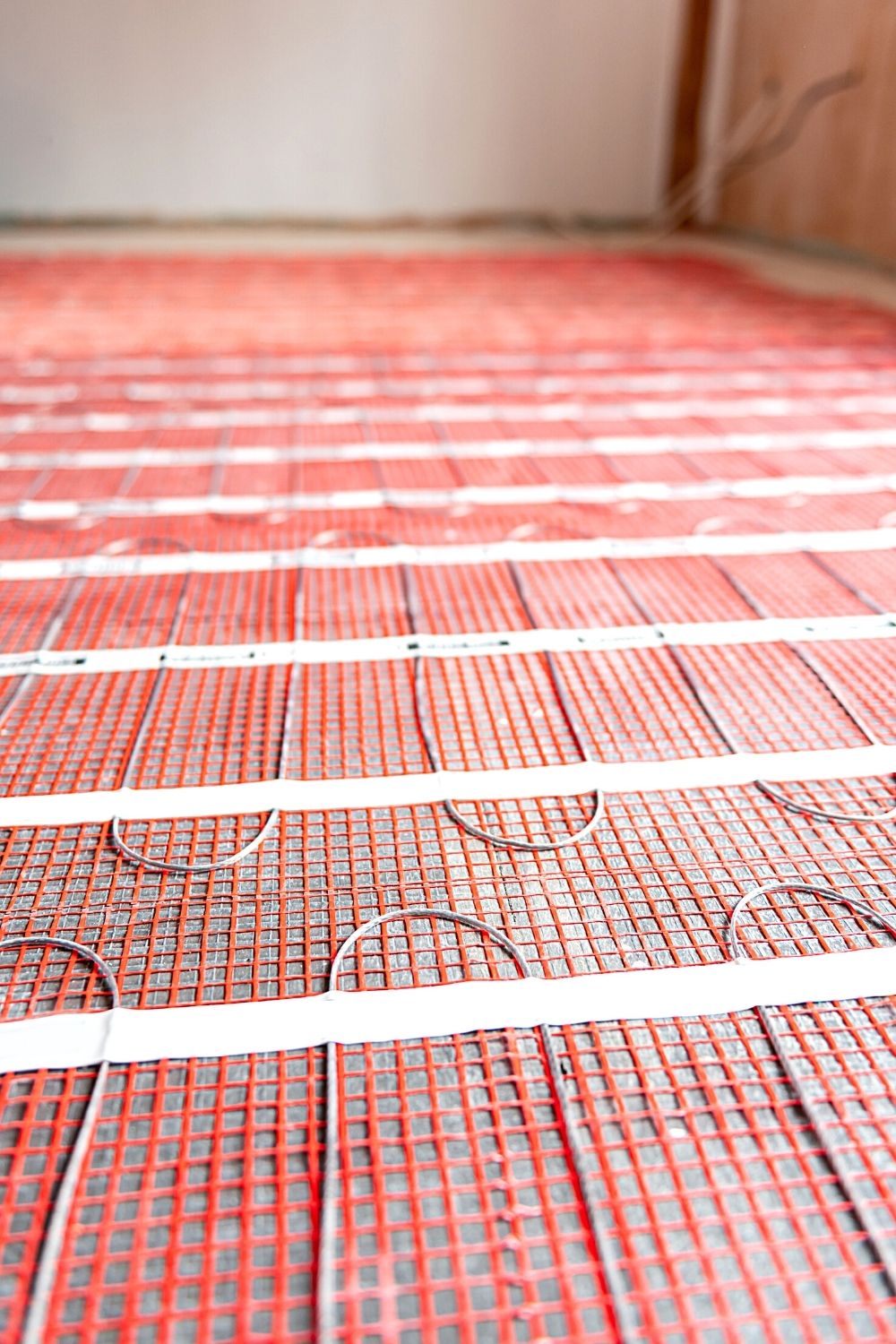
You can place a heating mat under the Dwarf White Isopod’s enclosure to give them continuous heat
Humidity
Dwarf Whites prefer more humidity and moisture than other isopods. Typically, you would only spray one section of the substrate with water to maintain this moisture level.
With Dwarf White’s, ideally, you should have a moisture level above 80%. They can survive even if the moisture level is at 50%, but they will be healthier and reproduce faster if the level is kept above 80%.
Make sure there are dry areas in the substrate as isopods require both a dry and wet area inside their enclosures.
View this post on Instagram
Diet
The Dwarf White, like most isopods, are omnivores. Their staple diet consists of decaying organic matter, animal excrement, and leaf litter.
When kept in bioactive environments, they will convert animal droppings into nutrients. They will also blaze through the plant matter and vegetation that fall to the floor.
Owing to their size, you may expect them to eat less. However, they will surprise you with how much they consume.
Thus, people use isopods in ecosystems for this one main reason. They are great at cleaning up the waste matter and keeping the ecosystem clean and fresh-looking.
The substrate you include in the enclosure will act as food for your isopods, but you should also supplement their diet with other foods.
Foods high in fiber can be given, such as soft and hardwoods. For example, the bark and cones of alder or magnolia trees.
Isopods also prefer large chunks of these woods as they can hide and congregate under them.
You can also feed them fresh food such as vegetables and fruits. They aren’t fussy about what foods are provided. You can use squash, potatoes, apples, mushrooms, and more.
Just make sure you cut these up into small pieces and replace them every few days. Moldy or rotting vegetables/fruits will attract other insects and also cause mold or other bacteria to grow.
In terms of protein, fish flakes or pellets and freeze-dried shrimp are great. The Dwarf White isopods are especially partial to the shrimp and will consume them very quickly.
Foods high in yeast are also preferred. If required, you can even purchase isopod feeds that are made specifically with their preferences in mind (you can easily buy these in most local feed stores).
Though isopods mostly survive on plant-based foods, other foods will aid their growth and reproduction.
I have found it is best to give them a mix of all foods while keeping the staples (leaf litter and plant decaying matter) present in the enclosure at all times.
Breeding
Dwarf White isopods are fast breeders and will reproduce within the first few months from when you purchase them.
As mentioned earlier, Dwarf Whites are unique in that their females are capable of reproducing on their own. Essentially, the females clone themselves to create viable offspring.
These isopods can take up to a year to reach adulthood. However, most isopod types tend to start breeding before reaching maturity.
With Dwarf White’s you can expect to have babies within 4 to 6 months.
Females can be identified by a white protruding growth underneath their bellies. They are also known to be larger in stature than males.
They can typically have up to 4 litters every year. The number of babies they produce can range between 25 to 200.
The females carry their eggs in the under pouch for 4 to 7 weeks until they are hatched. After that, they will continue to carry them around for another few weeks.
This is until the babies can fend for themselves be able to survive without their mother’s help.
When purchasing isopods, I would always check that there’s at least 1 female and 1 male. But, you can avoid that specifically with the Dwarf White species.
Once you get your first isopods and they start breeding, you can expect to have a colony within a few months. Because the females are parthenogenetic, the reproduction rate will be very high.
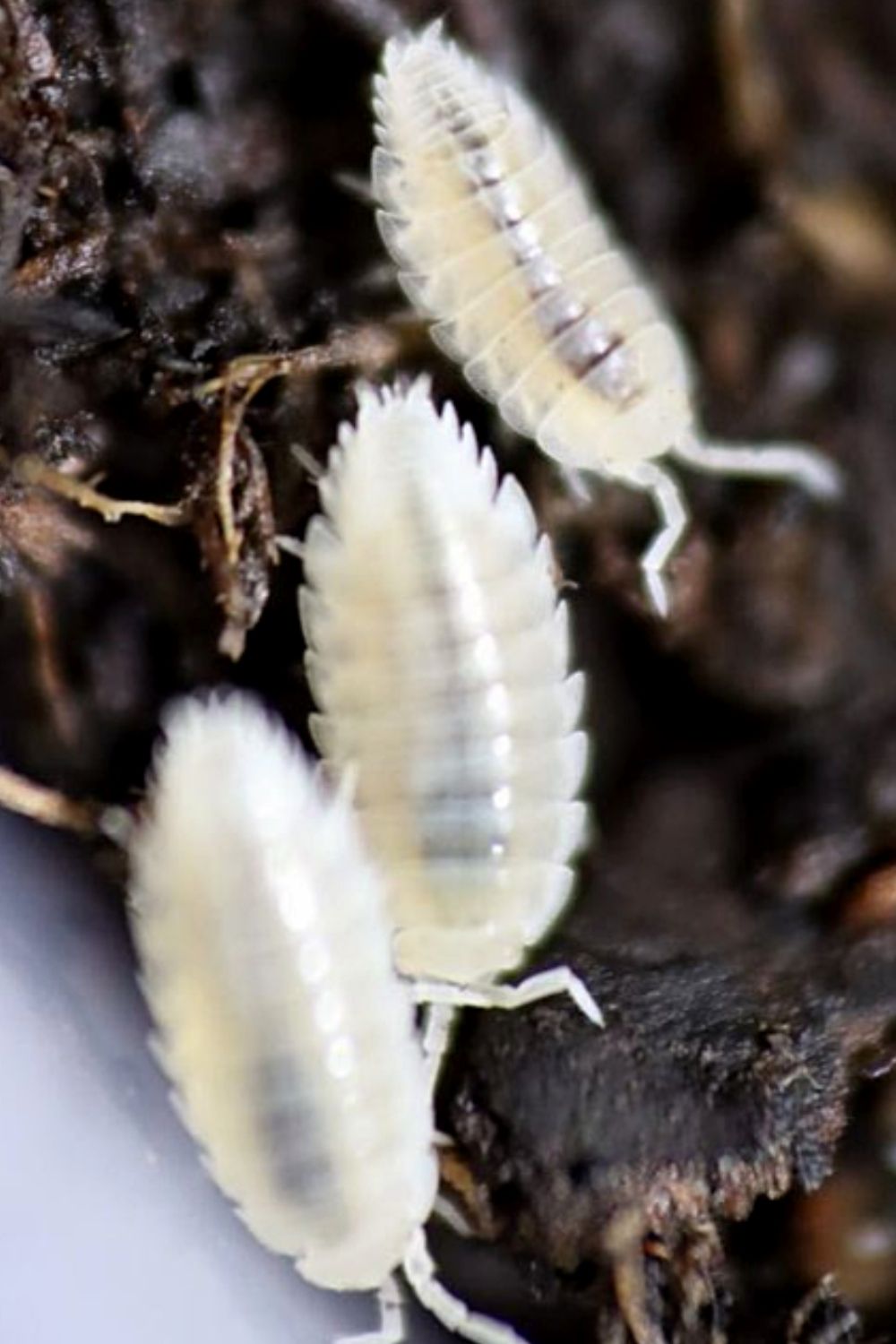
Photo Credit: @isofloraisopods on Instagram!
The number of babies will start to compound, especially if most of the isopods you receive are female. The higher the number of isopods you purchase, the faster the rate of reproduction will be.
With these isopods, you can easily have enough isopods for both cleaning and feeder purposes within a year.
In terms of the breeding process, they don’t need human intervention. Simply let them be and let nature run its course and it should happen without a hitch.
Though, by providing them with their ideal living conditions (high humidity and warm temperatures), you can boost their reproduction rate as they will begin to breed much faster.
Frequently Asked Questions about Dwarf White Isopods Care Guide
Can you have too many Dwarf White isopods in one ecosystem?
You have to be careful of reproduction rate and rate of feeding when managing an ecosystem. Dwarf Whites can reproduce very quickly. This can lead to many of them climbing out or cannibalizing due to insufficient food sources.
Are there any animals you shouldn’t house with Dwarf White isopods?
Certain invertebrates (like roaches) and isopods that like to burrow underground are averse to Dwarf Whites. Even though these isopods will not directly harm them, their presence can cause a lot of distress. They will eventually die out over time.
Are Dwarf Whites always white in color?
Most often your Dwarf White isopods will be white. However, they can range from yellow to white brown based on what they feed on and their age.
Conclusion About Dwarf White Isopods Care
Most breeders purchase Dwarf Whites mostly for their utility. They cannot be seen most of the time, but are adept at maintaining cleanliness inside an ecosystem.
Most times, they’re incredibly tiny that a magnifying lens is required to see them. So, if you have an ecosystem with other larger animals, you can’t go wrong with Dwarf White isopods.
Also, since they reproduce quickly, you will have an abundant source of nutritional food for your animals within a short time.

